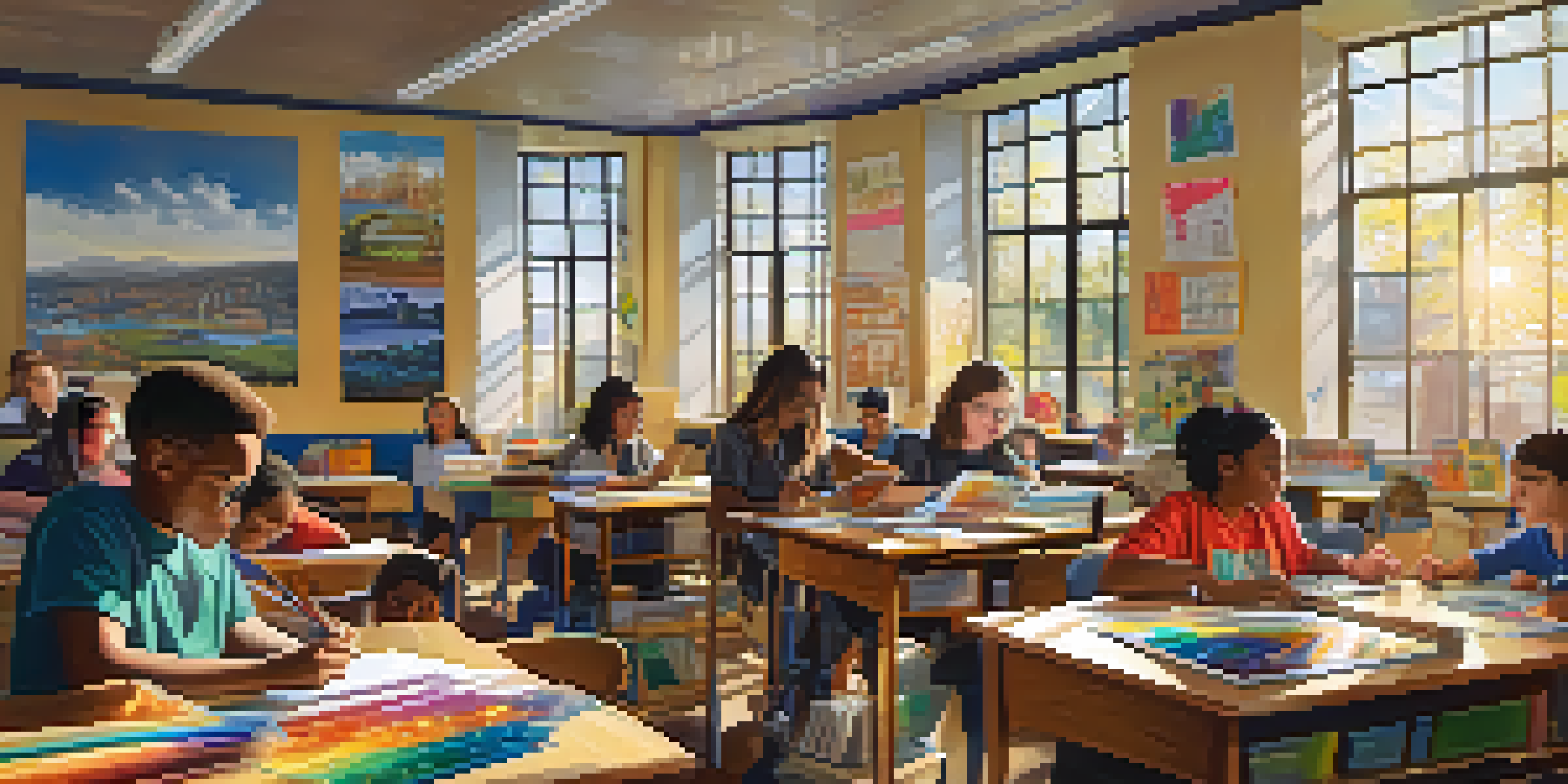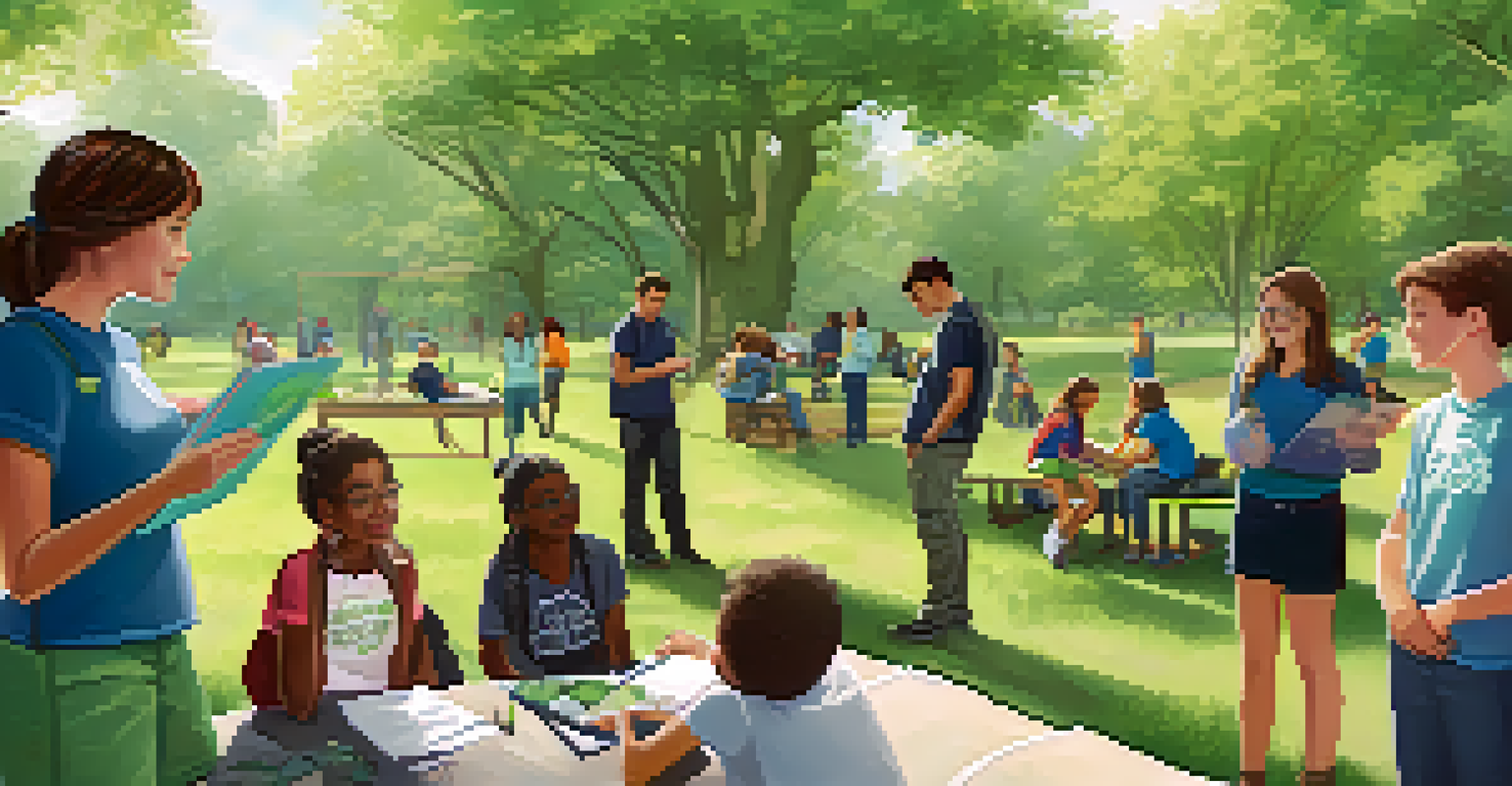Interdisciplinary Learning: Engaging Parents and Communities

Understanding Interdisciplinary Learning and Its Importance
Interdisciplinary learning is a teaching approach that integrates different subjects, allowing students to make connections across various fields. This method encourages critical thinking and creativity, as students learn to tackle real-world problems from multiple perspectives. For instance, a project on climate change could combine science, social studies, and art, helping students understand the issue's complexity and relevance.
We do not learn from experience... we learn from reflecting on experience.
By engaging in interdisciplinary learning, students are not just absorbing information; they are actively participating in their education. This approach fosters a deeper understanding of topics, making learning more meaningful and applicable to their lives. As a result, students become more invested in their education and are better prepared for future challenges.
Moreover, interdisciplinary learning prepares students for the increasingly interconnected world they will enter after graduation. By collaborating across disciplines, they develop essential skills such as teamwork, communication, and problem-solving, which are crucial in both academic and professional settings.
The Role of Parents in Interdisciplinary Learning
Parents play a pivotal role in supporting interdisciplinary learning. When families are involved in their children's education, it creates a supportive environment that enhances learning outcomes. By participating in school events, volunteering, or simply discussing subjects at home, parents can help reinforce the connections made in the classroom.

For instance, a parent who shares their expertise in a particular field can provide valuable insights, enriching the learning experience for everyone. This engagement not only benefits the students but also fosters a sense of community and collaboration among families and educators.
Interdisciplinary Learning Enhances Skills
This teaching approach fosters critical thinking, creativity, and real-world problem-solving by integrating multiple subjects.
Additionally, parents can help bridge the gap between school and real-world applications. By encouraging children to explore how their learning applies to everyday life, they instill a sense of curiosity and motivation that can lead to lifelong learning.
Building Community Partnerships for Enhanced Learning
Creating partnerships with local organizations and businesses can enhance interdisciplinary learning. These collaborations provide students with unique opportunities to apply their knowledge in real-world settings. For example, a partnership with a local museum could lead to a project that combines history, art, and science, allowing students to engage with the community while learning.
Education is not the filling of a pail, but the lighting of a fire.
Community partners can also bring in resources, expertise, and experiences that enrich the curriculum. By collaborating with local experts, schools can offer students insights into various professions, helping them understand the relevance of their studies. This exposure can inspire students to pursue careers in fields they may not have previously considered.
Furthermore, these partnerships foster a sense of belonging and investment in the community. When students see their learning connected to the world around them, they are more likely to feel empowered to contribute positively to their neighborhoods.
Engaging Students Through Project-Based Learning
Project-based learning (PBL) is a dynamic classroom approach where students actively explore real-world problems and challenges. This method aligns beautifully with interdisciplinary learning, as it encourages students to draw upon various subjects to develop solutions. For instance, in a PBL unit on urban development, students might incorporate geography, economics, and environmental science.
Through PBL, students become active participants in their learning journey, working collaboratively to achieve a common goal. This not only fosters teamwork but also enhances critical thinking and problem-solving skills, essential for success in today's world. Students learn to navigate challenges and celebrate successes together, building a sense of camaraderie.
Parental Involvement Boosts Education
Active participation from parents reinforces learning and bridges the gap between classroom knowledge and real-world applications.
Moreover, project-based learning often culminates in a presentation or showcase, allowing students to share their work with peers, parents, and community members. This not only boosts their confidence but also reinforces the connection between their education and the community, creating a shared sense of purpose.
Utilizing Technology to Foster Interdisciplinary Learning
Technology plays a crucial role in enhancing interdisciplinary learning. Digital tools can facilitate collaboration, research, and communication among students, teachers, and parents. For example, platforms like Google Classroom enable students to work together on projects, share resources, and receive feedback from their peers and educators.
Additionally, technology allows for a wealth of information to be accessed, enabling students to explore topics in-depth. Online resources, educational apps, and virtual field trips can supplement traditional learning methods, making interdisciplinary connections more tangible. This accessibility to diverse materials enriches the learning experience, catering to different learning styles and interests.
Finally, technology can help bridge the gap between school and home, keeping parents informed and engaged in their children's learning. By utilizing online platforms for communication, educators can share updates, resources, and opportunities for involvement, ensuring that families remain connected and invested in their children's education.
Creating a Culture of Collaboration Among Educators
For interdisciplinary learning to thrive, a culture of collaboration among educators is essential. When teachers from different disciplines work together, they can develop cohesive lesson plans that integrate multiple subjects. This collaboration not only enhances the curriculum but also fosters a supportive professional environment where educators can share ideas and best practices.
Regular professional development opportunities can help educators strengthen their interdisciplinary teaching skills. Workshops, training sessions, and collaborative planning time allow teachers to learn from one another and explore innovative teaching strategies. This ongoing professional growth ultimately benefits students, as they receive a richer educational experience.
Community Partnerships Enrich Learning
Collaborations with local organizations provide unique opportunities for students to apply their knowledge in real-world contexts.
Creating interdisciplinary teams within schools encourages educators to think outside their subject silos. By collaborating on projects and sharing resources, teachers can design engaging lessons that captivate students and promote a deeper understanding of complex concepts.
Measuring Success in Interdisciplinary Learning Initiatives
Measuring the success of interdisciplinary learning initiatives is crucial for continuous improvement. Schools can use a variety of assessment methods, such as project evaluations, student reflections, and parent feedback, to gauge the effectiveness of their programs. This data helps educators understand what works well and where adjustments may be needed.
Standardized test scores can be one indicator of success, but they shouldn't be the only measure. Observations of student engagement, collaboration, and critical thinking during interdisciplinary projects can provide valuable insights into the impact of this approach. Additionally, tracking students' ability to apply their learning to real-world situations can highlight the true value of interdisciplinary education.

Ultimately, success in interdisciplinary learning should be defined not just by academic achievement but also by students' personal growth and development. By fostering curiosity, creativity, and a love for learning, schools can cultivate well-rounded individuals who are prepared to thrive in an ever-changing world.